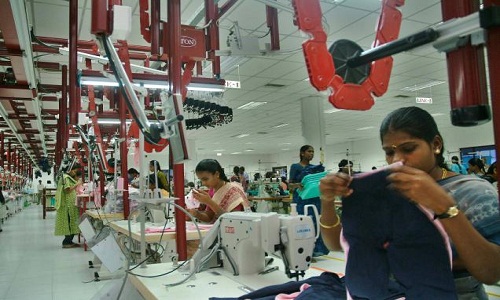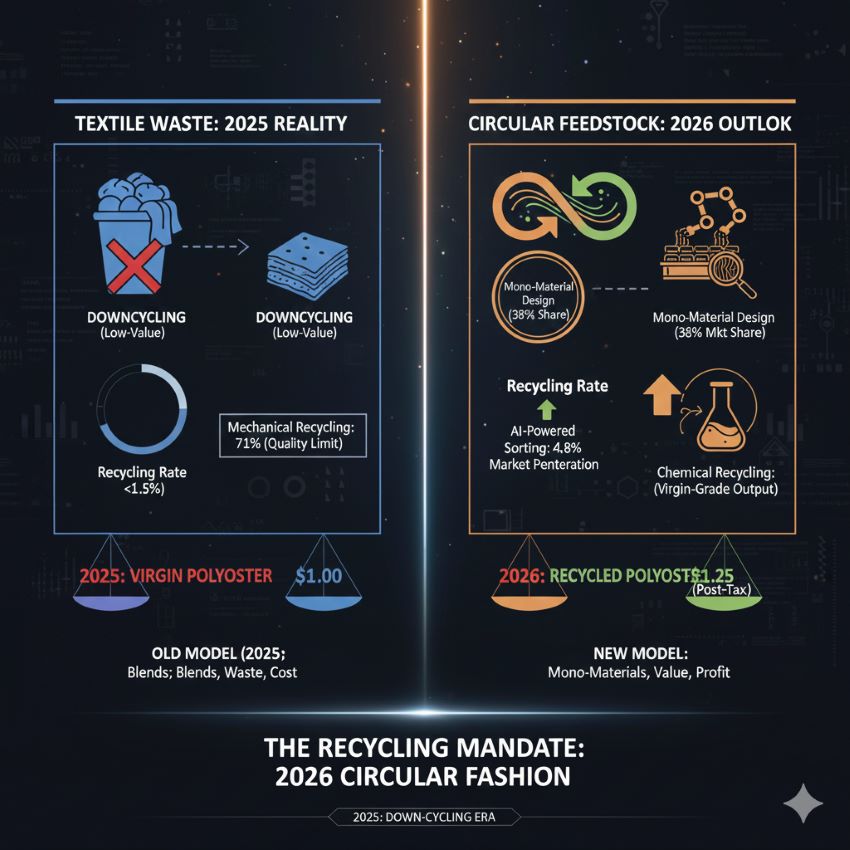"India has a unique opportunity to reverse the decline in its export share and seize a global leadership position. Some of this opportunity is arising due to changing labour dynamics in China, which has been the world’s textiles behemoth. Indian the textile sector is one of the four most labour-intensive sectors of the economy, along with construction, agriculture and tourism sectors."

India has a unique opportunity to reverse the decline in its export share and seize a global leadership position. Some of this opportunity is arising due to changing labour dynamics in China, which has been the world’s textiles behemoth. Indian the textile sector is one of the four most labour-intensive sectors of the economy, along with construction, agriculture and tourism sectors. It has a huge potential for generating sustainable jobs as well as export earnings. Currently, it employs about 35 million people and contributes 12 per cent of exports. But just 15 years ago, the share of textiles and clothing in India’s manufacturing exports was more than 25 per cent.

India’s garment exports have now been overtaken in dollar terms even by its neighbour Bangladesh, and Vietnam may not be far behind. Of course, Bangladesh has benefitted from duty-free access to the European Union, and indeed some Indian entrepreneurs too have located themselves in that country for that reason. But Bangladesh’s transformation of its garment sector within a decade is nothing short of fantastic, offering some lessons for us as well.
Meanwhile, India has a unique opportunity to reverse the decline in its export share and seize a global leadership position. Some of this opportunity is arising due to changing labour dynamics in China, which has been the world’s textiles behemoth.
Textile a huge opportunity
Chief Economic Advisor (CEA) Arvind Subramanian has been championing the cause of this sector with compelling data. He points out most of the sustained East Asian growth of past decades was on the back of textile and clothing boom. Most tellingly, a unit of investment in the clothing sector generates 12 times as many jobs as the automobile sector and 30 times that of steel. Clearly, there is a big bang for the investment buck in textiles. Not surprisingly, the CEA’s passionate advocacy is showing results.
The recent reforms announced by the cabinet under a ‘textile package’ address some key impediments, and the package is timely. First, the reforms removed some of the embedded tax burden from exports through a duty drawback scheme. Secondly, firms are provided incentive to hire more workers through a subsidy to meet the EPF costs. But clearly much more needs to be done to harness the great promise. A CII-BCG study for textiles, made-ups and apparel estimates that the sector can generate 50 million jobs in the next nine years. Of these, more than 70 per cent will be for women. The study also shows that the shift of textiles and garments away from China is an annual opportunity of about 280 billion US dollars for other developing countries.
Advantage India
India has some advantages in being present in all parts of the value chain, beginning from fiber, yarn, fabric and going all the way to clothing, branded apparel and fashion. This is not to mention the new emerging markets like technical textiles that have industrial applications.
But here are two additional considerations that need close attention. First is the issue of fiber neutrality. In India, there is a curious frenemy relationship between cotton and man-made (synthetic) fibers. The global consumption pattern is 65:35 in favour of synthetics (like polyester, rayon, acrylic), whereas in India it is exactly the reverse. The net imports of the US and EU show a steady decline in cotton textiles vis-à-vis manmade fiber products over the past five years.
If India needs to tap into the export opportunity to these developed nations, our domestic mix has to mimic the global demand pattern. In India, cotton makes up 80 per cent of all fiber consumption whereas in China it is 50 per cent. This skew has been made worse due to the highly unequal excise tax treatment of cotton versus the rest. The textile ministry is aware of this asymmetry, and a fiber-neutral policy is on the anvil. Hopefully the GST regime will also discontinue the sharp asymmetry that has persisted for the past ten years.
FTAs, and their importance
Then there are the free trade agreements. Interestingly, the CEA himself is heading a committee to evaluate the costs and benefits of the several FTA that have been signed by India in the past couple of decades. Prima facie it appears that India’s trade deficit has uniformly gotten worse following several FTAs. No doubt, there has been trade enlargement, but not necessarily to India’s benefit. The reasons could be many – some fair, some unfair.
There is also the looming shadow of the mega treaty called the Trans Pacific Partnership which goes much beyond trade, and makes it compulsory for the entire value chain to be located in member countries. India is not a member of TPP and can potentially be at a serious disadvantage. Fortunately, the TPP is losing political support, so it may be several years into the future. Finally, despite these various hurdles, let us not lose sight of the huge promise of this sector (it is after all one of the trinity of roti, kapada, makaan), in generating large-scale jobs, especially for women, and healthy foreign exchange earnings. With proper policies and reforms, the textile sector in India is definitely heading for a high noon of great fortune.












